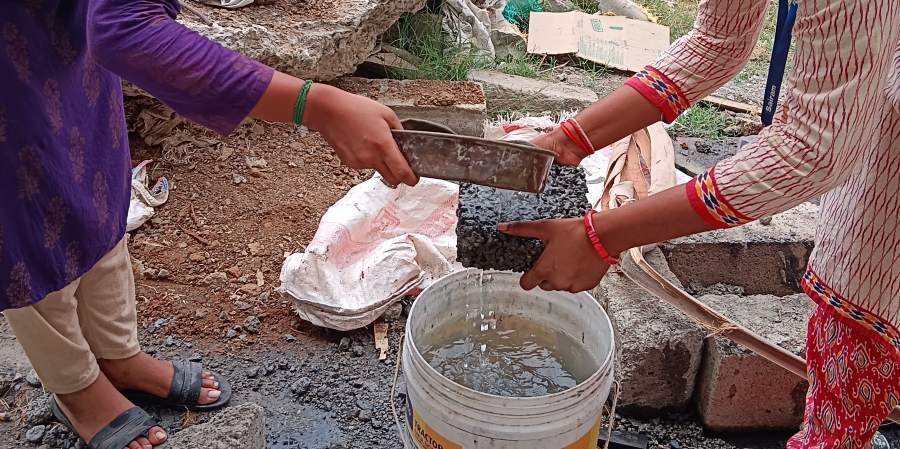

Leveraging pervious concrete pavement serves as an innovative and robust approach to tackling major environmental issues and promoting sustainable development. This unique form of concrete plays a crucial role in groundwater replenishment, mitigating stormwater runoff, and complying with the Environmental Protection Agency's (EPA) stormwater regulations in the United States by capturing and infiltrating rainwater. Pervious concrete is recognized by the EPA and other organizations, including geotechnical engineers nationwide, as one of the Best Management Practices (BMPs) for handling regional and local stormwater runoff. This paving technology reduces the necessity for swales, retention ponds, and other stormwater management methods, thereby enhancing land usage and potentially lowering initial project costs. The formulation of this concrete involves carefully controlling the amounts of water and cementitious materials to create a paste that fully coats aggregate particles, usually excluding or minimizing sand to achieve a high void content. This results in a highly permeable network of interconnected voids that allow for efficient drainage. The typical water flow rate through pervious concrete is around 480 inches per hour (0.34 cm/s, or 5 gallons/ft²/min or 200 liters/m²/min), though higher rates are possible. The void content generally ranges from 15% to 25%. Despite the decreased mortar content and high porosity reducing its strength compared to conventional concrete, sufficient strength for various applications can still be attained. While pervious concrete has a broad spectrum of uses, it is most commonly utilized in pavement applications. Also referred to as porous concrete, permeable concrete, no-fines concrete, gap-graded concrete, or enhanced-porosity concrete, this material is the main focus of this site, emphasizing its applications in paving.
Because of its porosity, which is determined by a number of variables including cementitious content, water-to-cementitious material ratio (w/cm), compaction levels, and aggregate quality and gradation, pervious concrete has unique characteristics when compared to conventional concrete (ACI 2010). Table 2 lists common material attributes related to pervious concrete, highlighting the significance of these attributes in pavement construction and structural design. The price difference between pervious and regular concrete can range from 15 to 25 percent; however, this might vary greatly depending on regional variations, particular applications, project size, and additive use. Blending Design: Pervious concrete is composed of cementitious materials, water, coarse aggregates, and maybe admixtures, just like regular concrete, however it usually doesn't include fine aggregates. A tiny quantity of fine aggregate is needed for freeze-thaw durability.
Usually between 5 and 7 percent is required. Pervious concrete's constituent parts have been discussed in the following ways (Tennis et al., 2004; Delatte et al., 2007; ACI 2010): Cement-Based Materials: The main binder in pervious concrete mixtures is either blended cements or conventional portland cement, which is frequently augmented with other cementitious ingredients. Material Characteristics: - Concrete made of plastic: Slump: Not relevant Unit Weight: Seventy percent of regular concrete - Hour of work: one - Concrete that has hardened: - Positioned Density: 125–100 lb/ft³ - Compressive Strength: 2,500 to 4,000 lbf/in³ on average 150 to 550 lbf/in³ of flexural strength; 2 to 18 gal/ft³/min (384 to 3,456 ft/day) of permeability Conversion factors: 1 lb/ft³ = 16 kg/m³; 1 lbf/in² = 6.89 kPa; 1 inch = 25.4 mm 40.8 L/m³/min = 1 gal/ft³/min. Conclusion of this blog is the cities with concrete pavement would more polution less compared to other with easy drain system
